GamesRadar+ Verdict
Street Fighter 6 offers the most flexible, versatile, and expressive combat seen in the series to date. With its fantastic suite of game modes and diverse character roster, Street Fighter 6 has something to offer every type of fighting game fan.
Pros
- +
Expressive combat
- +
Brilliant game modes
- +
Great roster of characters
Cons
- -
World Tour story is a little shallow
Why you can trust GamesRadar+
Street Fighter 6 is one of the best fighting game packages I've ever encountered. It's absolutely jam-packed with things to do right out of the gate. Capcom has delivered a diverse collection of game modes, fighting styles, and opportunities for personal expression which work to both reflect the diverse fanbase that has rallied around this franchise over the last 35 years, and rebuff any fears that the studio would repeat its past mistakes.
Developer: In-house
Publisher: Capcom
Platform(s): PC, PS5, Xbox Series X
Release date: June 2, 2023
For as fantastic as the core fighting experience was, Street Fighter 5 launched in such a state back in 2016 that it was never able to fully shake off the reputation of being a barebones package. Even after years of significant updates and expansion, there's still this whiff of negativity around it – a failure to leave a good first impression ultimately defining the lasting legacy. Capcom is clearly eager to avoid such reputational harm this time around, with Street Fighter 6 arriving with three separate, fully-featured game modes that compliment one another – Battle Hub, Fighting Ground, and the single-player focused World Tour mode.
Welcome to Metro City

World Tour is unlike anything I've seen before in a fighting game, with the closest comparison being something akin to a Yakuza-lite. You're able to create a custom character and then cut about a hub map based off of Final Fight's legendary Metro City. From there, you're free to get into scraps, complete quests, level up stats like damage output and defense, and progress through a relatively self-contained story. Ryu, for instance, is quite happily tucked away in Japan trying to figure out how to use a mobile phone and Chun-Li is teaching kung fu in Metro City's Chinatown district. They've beaten M. Bison, destroyed the Shadaloo organization, saved the day, and their position in the greater Street Fighter lore is at an end. They're pretty much retired.
Despite not featuring all that prominently in the World Tour storyline, there is some cute character development as you deepen your relationship with each of the masters – achieved by using their movesets in combat, defeating enemies who use a particular fighting style, completing requests, and, hilariously, by buying them gifts. Anyone looking for the continuing adventure of Ryu and friends is going to be left wanting, with World Tour oftentimes feeling less a single player Street Fighter experience and more like an RPG sequel to Final Fight.
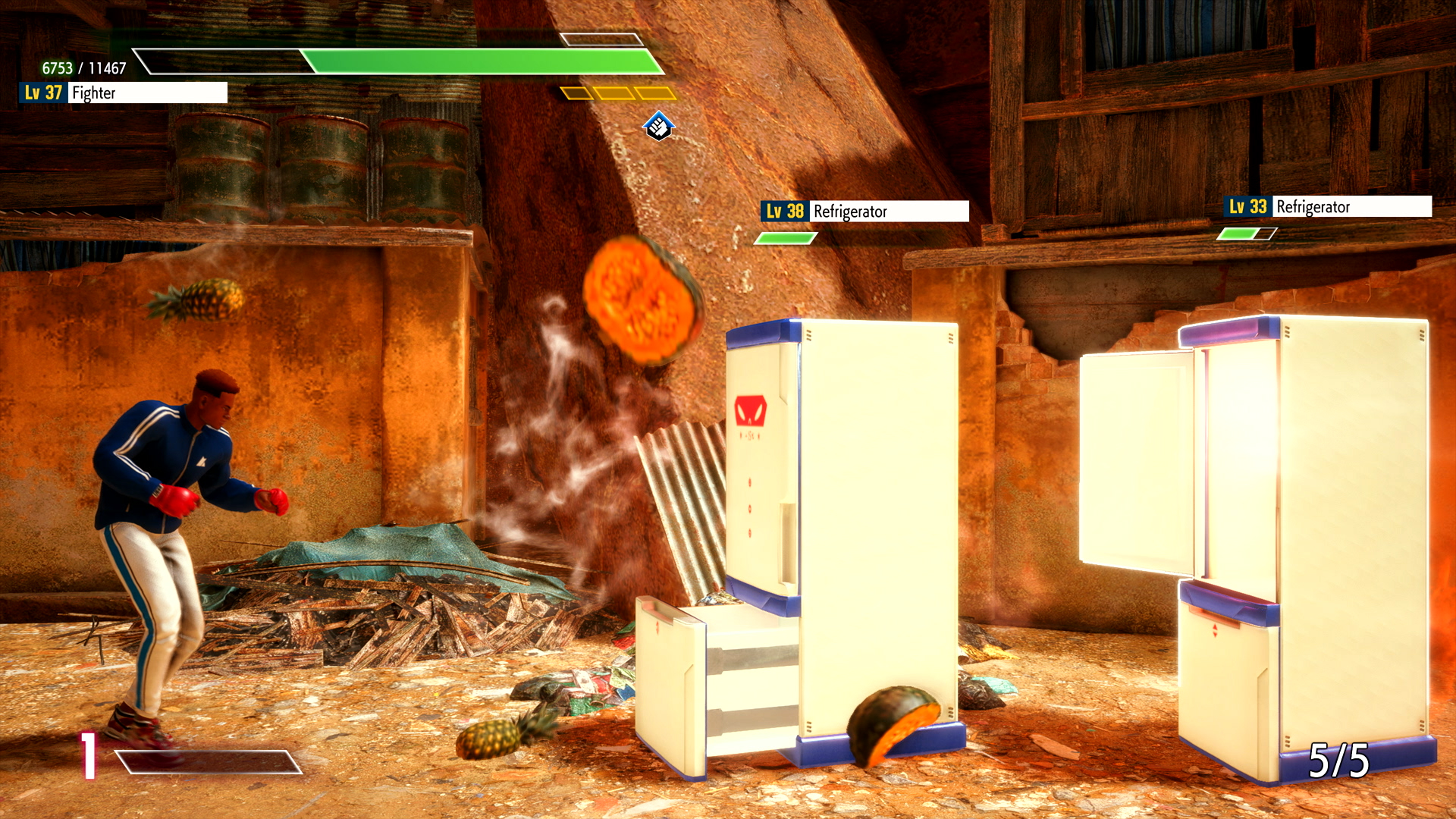
A somewhat shallow story aside, then, the real brilliance of World Tour lies in its variety. The ability to mix and match special moves from the entire roster with a character's base fighting style is a lot of fun. Imagine having Dhalsim's ranged normals and ability to teleport, Manon's command grab and damage stacking ability, Luke's ludicrously fast fireball, Ken's multi-hitting dragon punch, E. Honda's sumo headbutt that can blast through projectiles, and something like Kimberly's bombs to create sneaky trap situations. World Tour lets you piece together intentionally broken characters and it's undeniably enjoyable – not only to find new combo paths, but to better understand how every core fighter on the roster has been created and balanced.
World Tour also succeeds as a discreet tutorial for Street Fighter 6's web of fighting systems. Some missions may require you to win by using elements of the new Drive system, while a 'Karate' minigame requires you to hold a certain direction to charge an attack, before hitting the opposite direction and an attack button to chop through a line of bottles or concrete blocks – a smart introduction to the fundamentals needed to play a 'charge' character like Guile. If you don't fancy sitting through Street Fighter 6's very comprehensive page of tutorials, simply finishing the majority of World Tour mode will give you a good base of skills to build upon when you finally dip your toe into the online waters.
FIGHT
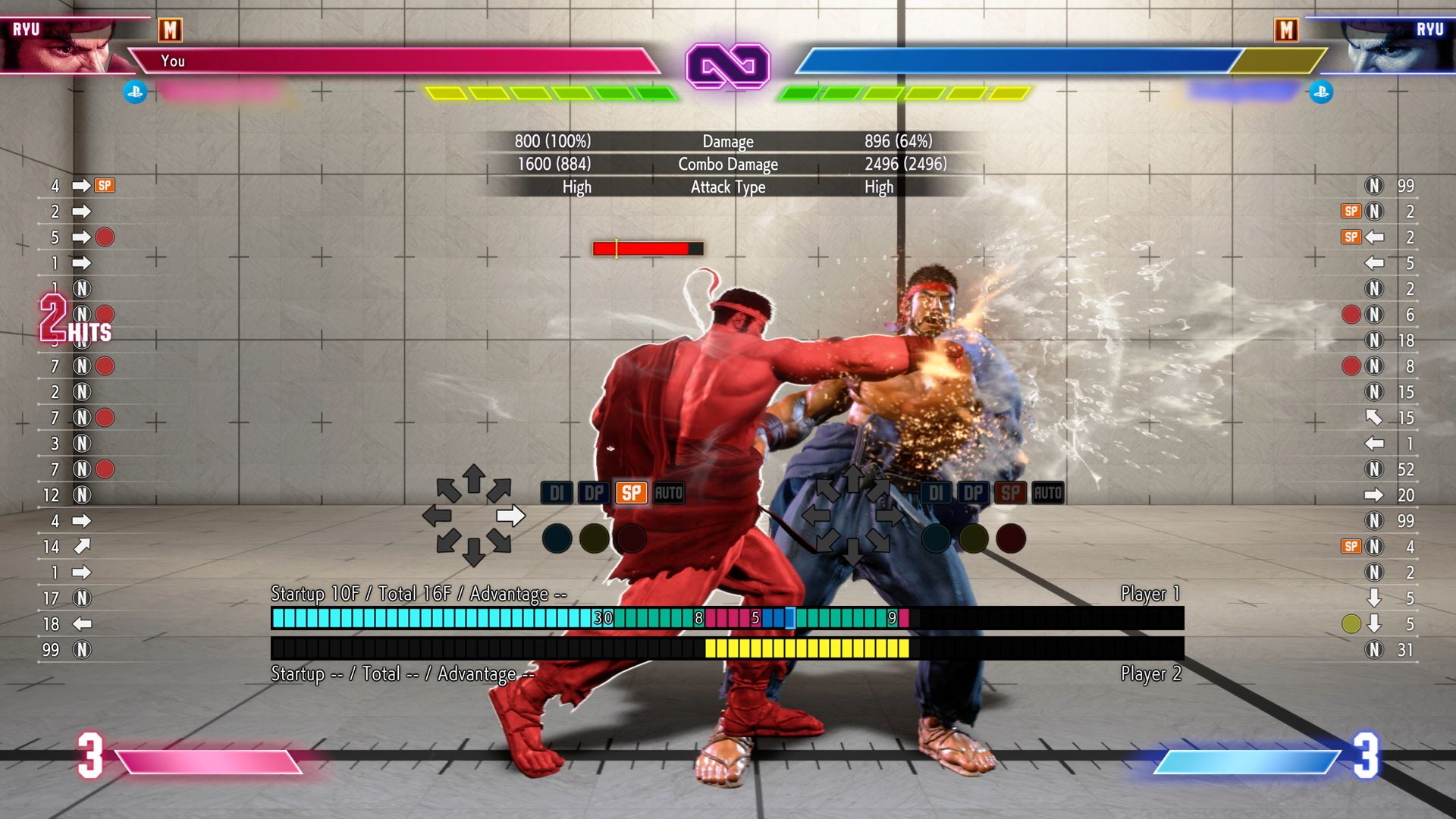
As entertaining as World Tour can be, it's the Fighting Grounds mode where you'll initially sink the majority of your time with Street Fighter 6. It's here where you'll sharpen your skills, test them against other players offline, and take part in more traditional activities – a classic Arcade mode, and new 'extreme battle' mode which allows you to fight with modifiers that spice encounters up.
The training systems offered throughout are extremely robust. Regardless of whether you're a day one beginner to a seasoned professional, Street Fighter 6 provides all the tools you'll need to gradually improve. All the usual stuff is here, such as input and attack information displays, but there's also an excellent visual indicator of frame data for you and your opponent which clearly messages who has an advantage. There's some really smart 'basic' training situations too; selecting 'whiff punishing', 'anti air' or other practice modes from the menu automatically configures encounters accordingly. By removing the need to set up several different elements within the training menu to get the dummy to behave in a certain way, Street Fighter 6 removes a lot of friction from the cycle of gradual improvement.
Couple this with character guides, interactive walkthroughs of every character's special moves, and general strategies in combat and the combo trials, and you'll find that Street Fighter 6 works hard to teach you everything from the essentials all the way up to highly contrived and technical combos. It's one of the better fighting game tutorials that I've experienced, and one which shows Capcom's commitment to drawing in a new player base alongside the seasoned hands who are returning for another round.
When you're sick of training, you can always have a blast through Arcade mode, fights with AI characters which are bookended by artwork and a voiceover that flesh out your chosen fighter's actions around the events of Street Fighter 6. This is actually where most of the real Street Fighter story elements are found, so if you're jonesing to find out who new final boss JP is, and where he fits into all of this, you're better off firing through his arcade mode ladder than sitting through World Tour mode.
Get Connected

Once you've familiarized yourself with the basics, it's the Battle Hub where the vast majority of your time will be spent. It's this big online arcade full of cabinets where you can strut about as your World Tour mode avatar, sit down and play a few games of Street Fighter 6, jump into some Capcom classics like Strider and Ghosts n' Goblins, and buy in-game cosmetic items.
Somehow, this online mode has managed to foster a strange sort of community, with players from around the world gathering to show off their horrific create-a-character monstrosities or rallying around a cabinet to watch two top players go at it. Hopefully, top name players from the Capcom Pro Tour will still pop their heads into the Battle Hub from time to time, rather than just sitting in ranked matchmaking. Online matchmaking was, despite the small pool of opponents during the review period, almost completely flawless. Undoubtedly some of the best netcode seen in any fighting game.
The World Tour, Fighting Grounds, and Battle Hub modes each have very clear identities, but they complement each other wonderfully – the result is a complete-feeling package that not only positions Street Fighter 6 as an experience which can draw in a wide range of players, but one which works smartly to encourage you to push outside of your comfort zone. What you learn in Fighting Grounds will put you in a better position to take on other players.
Big screens in Beat Square (Metro City's Times Square equivalent) show things that are happening in Battle Hub, encouraging you to go take a look. And Unlocks earned in World Tour can be taken into Battle Hub, where you begin to challenge other avatars to fights. With Street Fighter 5, it was a case of getting online or there's very little for you, but with Street Fighter 6, Capcom encourages you to take your first steps into competitive fighting in a much more inviting and convincing manner.
Drive To Survive
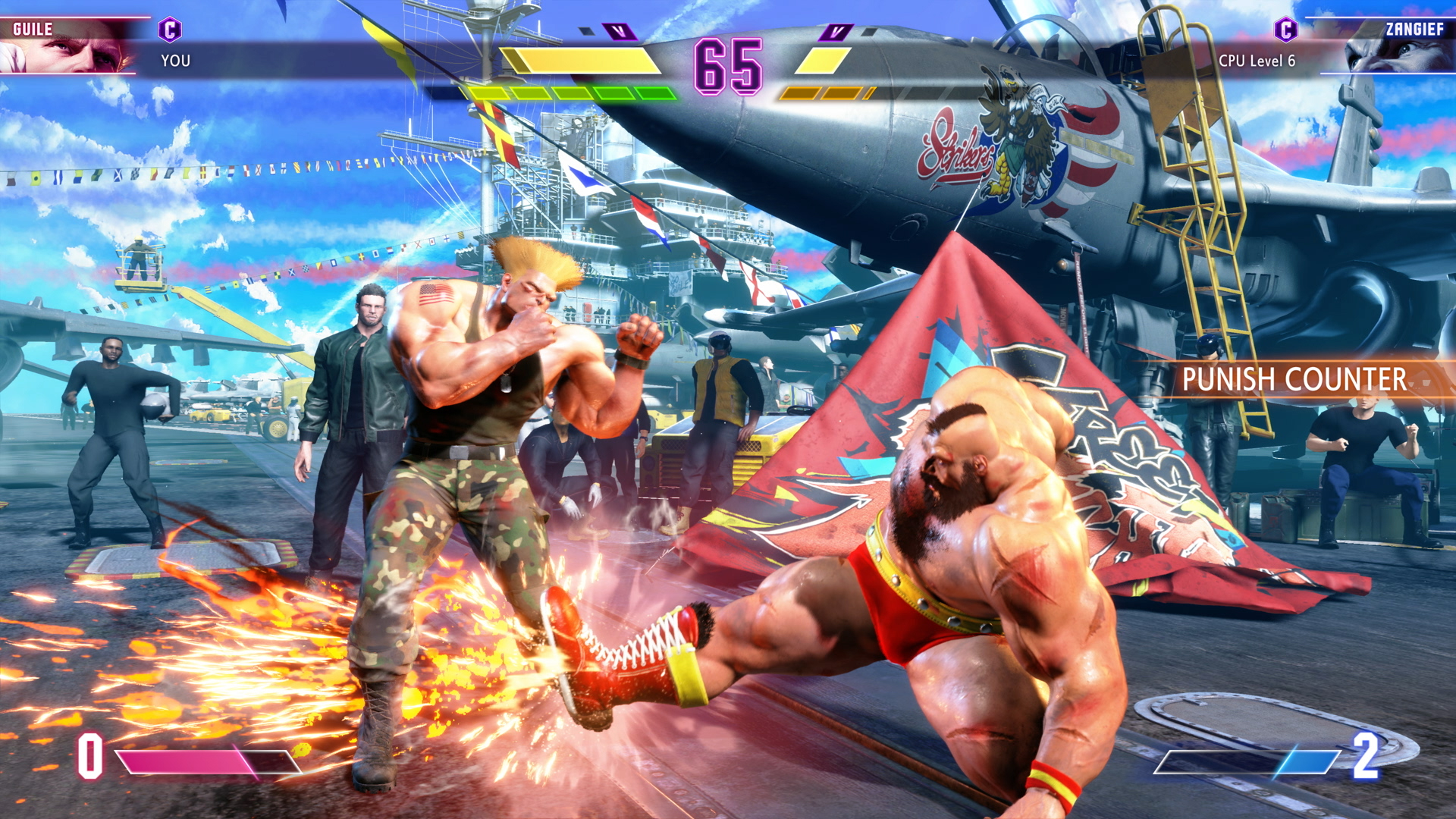
Naturally, the most important component of any fighting game are the unique systems that give it its own particular flavor. Street Fighter 3 had its parries, Street Fighter 5 had the V-System, and Street Fighter 6 has the Drive System – and it might just be the most interesting developments in the series' history. It is all governed by a single meter – the Drive Gauge – and by spending certain amounts of this you can perform several different actions.
There's the Drive Reversal, which acts almost identically to the V-Reversal in Street Fighter 5. Performed by hitting both heavy attack buttons whilst blocking, essentially acts as a 'get off me' move and knocks your opponent away, temporarily mitigating any pressure they may be putting up on you. Drive Rush is a sudden dash forward, allowing you to continue combos where previously it would not be possible, or simply just trying to catch your opponent off-guard.
Moves performed after a Drive Rush have slightly better frame data – the background numbers behind any fighting game that dictate the strengths and weaknesses of attacks – meaning that two moves that previously wouldn't link together in a combo will if you perform them after a Drive Rush, opening up so many more possible combo paths and possibilities. This can also be performed from another part of the Drive System, the Drive Parry, which acts not only as a way of deflecting an opponent's attack but also as a means of recovering your Drive Gauge. Holding down both medium attack buttons puts you in a parry state, where you will automatically deflect all incoming attacks, although you will be very vulnerable to grabs. Hitting both medium attacks as the attack lands causes a Perfect Parry, which actually allows you to counter with your own attacks. The timing on this is very precise, so it's a big risk but for a hefty reward.
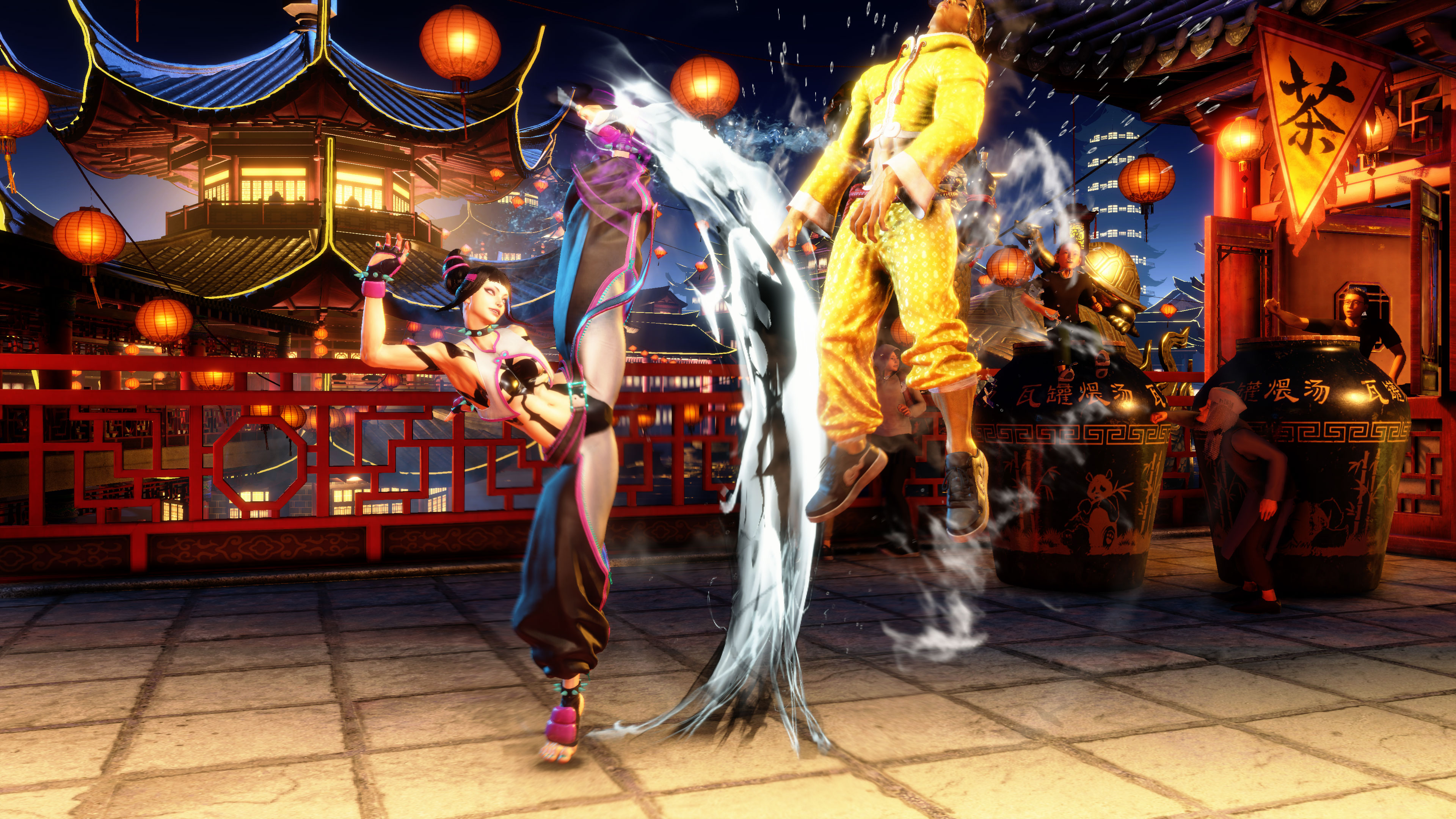
One of the most instantly effective uses is the Drive Impact – a huge armored strike that will blast through three incoming hits to deliver a crushing blow, leaving your opponent completely vulnerable. It's extra scary because even if you block a Drive Impact you get pushed back substantially, and if you hit the edge of the screen from this pushback, you get stunned automatically. There's a lot of mind games around this technique – knowing when to use it to catch your opponent out and not just to throw it out wildly or predictably is going to be a key part of what makes a top player – as it is easy to counter by simply doing a Drive Impact of your own on reaction. Finally, you can spend some of this meter to perform 'Overdrive' versions of your special moves, the same as EX moves in most other Street Fighter games, these OD versions have slightly different strengths, speeds and properties.
The most radical aspect of this system is that you start every round with a full Drive Gauge. Traditionally, in a fighting game, you build up this meter throughout a match and can spend it on enhanced special moves, super moves and other means of turning the tide of battle in your favor. The meter is usually part of, or heavily linked with a game's 'comeback mechanic' – something you can use to drastically swing the momentum of the fight. Here, this is not the case. All parts of the Drive System are available to both players from the word FIGHT, so the game has you empowered and fully stocked up, capable of pulling off your best stuff at the start of the round, rather than giving it to you just in time to steal one from your opponent. You're not building to a conclusion but instead have all the tools to build a strategy. It's completely at odds with how not only Street Fighter, but most fighting games, tend to work and is a major part of what makes Street Fighter 6 feel so fresh.
Character Select
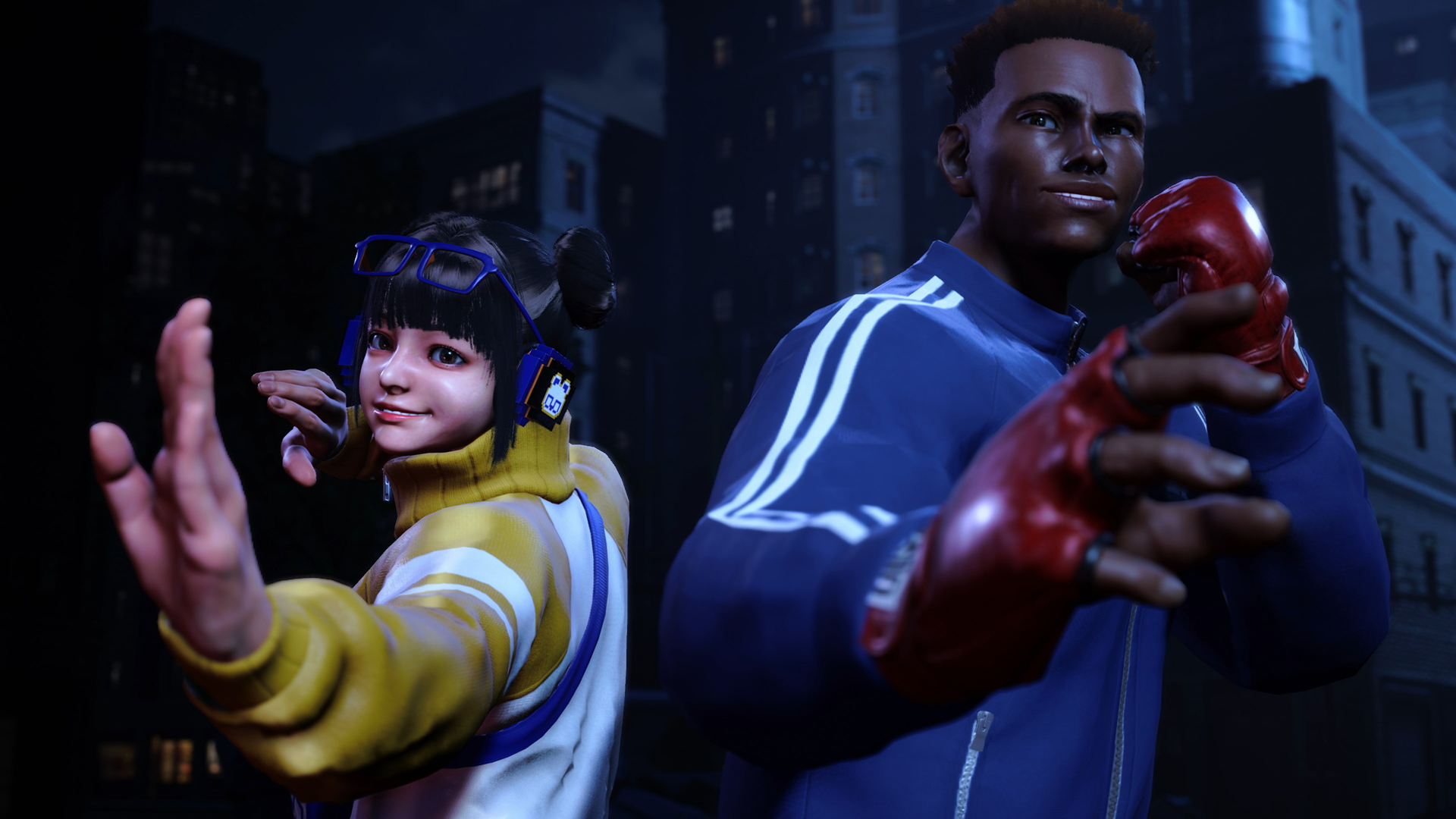
Of course, no fighting game is worth playing if the roster isn't up to much. Thankfully the initial Street Fighter 6 lineup is not only varied, but incredibly fun. The newcomers immediately feel like a part of the furniture – as if they've been a part of the series forever – while all still bringing something new to the table too.
Manon is the grappler fan's grappler, with her ability to make a command grab stronger with every one she lands an incredible force to be reckoned with. JP is a powerful zoning character who can combo you from a full screen away and make you think twice for even trying to approach him. Kimberly mixes street dance with Bushinryu ninjutsu to create a fighting style that is fast and tricky, keeping your opponent guessing. Jamie is the first 'Drunken Boxer' style in the Street Fighter series, with lots of multiple hitting normal attacks and some absurd combo potential, growing in potency with every drink he takes.
Lily and Marisa are the two characters classed as the 'easiest' to use, though that doesn't mean they don't have difficult to perform combos or simple execution requirements, but more that the strategy you want to take to win with them is a lot more straightforward than some of the other characters. With Lily, you're looking to utilize her wind-powered buff to give yourself some significant offensive advantages and with Marisa you're looking to just use her ability to absorb hits to power your way through an opponent's offense and start dishing out some serious damage of your own.
The returning characters have been given a few tweaks too, not only to freshen them up but make their basic strategy work in harmony with the Drive System. A good example here is Dhalsim, who as well as receiving subtle tweaks to the speed of his attacks, now has the ability to teleport without the need for a traditional special move input – you simply have to press left or right and any three punches or kicks. In any other instance of Street Fighter, removing the execution requirement needed to perform tricky techniques would create serious imbalance, but Street Fighter 6's Drive System offers every character opportunities to deal with changes like this. Capcom has clearly taken its classic character archetypes and ensured that they all gel with the core that makes up Street Fighter 6.
Whether you're a hardcore fighting game player or a casual Street Fighter fan who hasn't touched the series for a generation or so, Street Fighter 6 has something for you and, not only that, manages to offer enough reason for both sides to dip their toes into the other side's water. It's a strong package – arguably the best overall fighting game package ever made – but it'd all be for naught if the fighting system that underpins it all wasn't up to much. It just happens to be the most flexible, versatile and expressive combat in a Street Fighter game to date. Street Fighter 6 is a perfect place to start or a brilliant continuation, an exceptional time for those who are looking to play 30 hours or 3000 hours.
Street Fighter 6 was reviewed on PS5, with code provided by the publisher.
More info
| Genre | Fighting |

Andi is a freelance games journalist, but also has a "normal job". Over the last 10 years, Andi has specialised in writing about Street Fighter and Dark Souls, but also covers games more broadly, along with creating podcasts and videos for YouTube and Twitch. Andi also prides himself in cooking a mean barbecue.




